Eisner’s rut
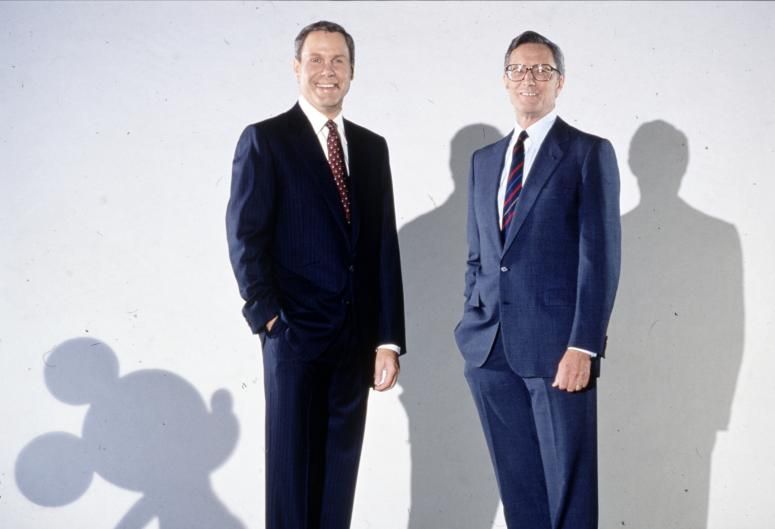
When Hong Kong Disneyland opened in 2005, it was the culmination of then-CEO Michael Eisner’s ill-fated “Disney Decade.” He barely stuck around long enough to celebrate the park’s “grand” opening… Eisner was ousted the same year by the “Save Disney” campaign.
Rewinding a bit, Eisner’s early years with Disney in the ’80s and early ’90s had seen the prolific and young CEO rejuvinate the studios’ tired live-action and abandoned animation divisions. But Eisner’s ambitious plans for global expansion and rebirth (what he called the Disney Decade) fumbled beginning in 1992. It was that year that his biggest and most ambitious investment yet – Disneyland Paris – opened to financial disaster that wreaked havoc on the once-visionary Eisner’s outlook.
Then, the unexpected and tragic 1994 death of his brother-in-business, Frank Wells – the “Roy” to Eisner’s “Walt” – only made matters worse.
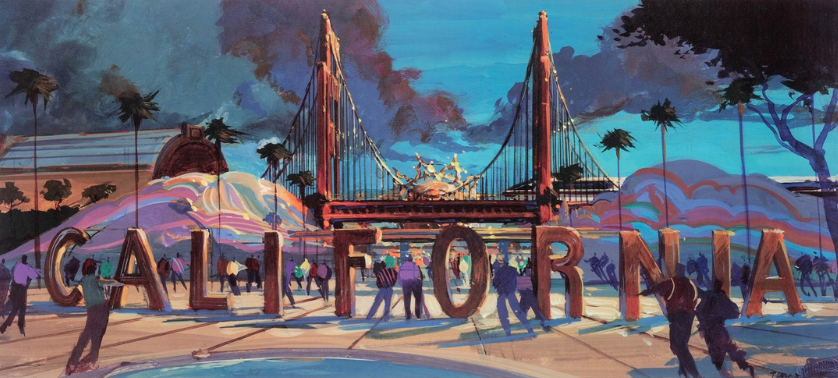
Paris’ collapse is the starting point for many stories of cancelled and closed attractions, with budgets slashed, Imagineering disinvited from projects, and penny-pinching executives stripping the parks to bare minimums. In a standalone feature, we traced just some of the Cancellations, Closures, and Cop-Outs brought on by Paris’ collapse, but when it comes to the pathetic parks, the newly-budget-conscious Eisner oversaw three.
First, look at the disastrous 2001 opening of Disney’s California Adventure. The park meant to become a counterpart and companion to Disneyland was underbuilt, underfunded, and creatively starved. Ultimately, it was outright boycotted by Disneyland’s loyal and generations-long visitors, necessitating a $1.2 billion rebuild from the ground up. We chronicled that phoenix-from-the-ashes story in its own in-depth entries, Disney’s California Misadventure: Part I and Part II.
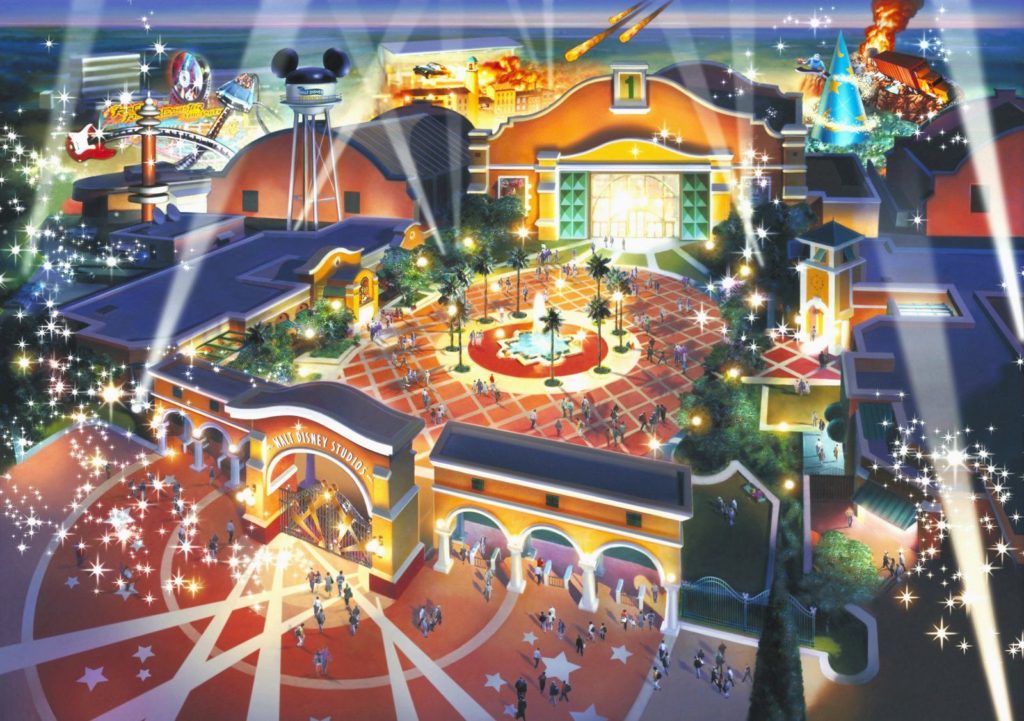
The very next year, contractual obligations forced the opening of an even more underbuilt and artistically vacant second park in Paris. 2002’s Walt Disney Studios only doubled down on the resort’s financial collapse. Likewise, it earned its own staggeringly depressing history and opening-year walk-through in Declassified Disasters: Walt Disney Studios Park. The park had so little to do, any entrance fee at all was tantamount to robbery, nevermind that the park with its three rides cost as much to enter as Disneyland Paris next door.
But the Walt Disney Company had one more underfunded park to rush order.
Hong Kong Disneyland
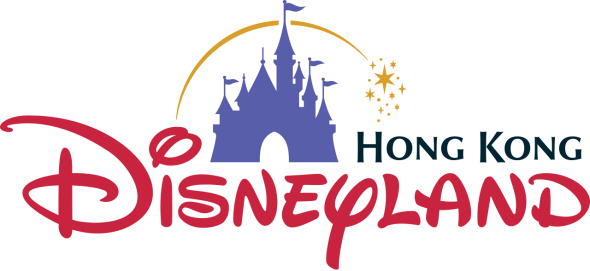
The frustrating 2005 opening of Hong Kong Disneyland is what rounded out the trio of Eisner’s low-budget parks. The underbuilt Chinese resort may look like a Disneyland clone in photos, but up-close it’s got the same disheartened qualities as California Adventure and Walt Disney Studios – it’s, in a word, flat.
The tiny park – easily the smallest Disneyland-style park on Earth – featured only Main Street, Adventureland, Fantasyland, and Tomorrowland. And each of those lands was, in turn, much less rich and much more vacant than any counterpart across the globe.
Consider Fantasyland, for example. While Disneyland Park’s features six dark rides and Magic Kingdom’s houses four, Hong Kong’s Fantasyland had one. The park had no “it’s a small world.” No Big Thunder Mountain. No Splash Mountain. No Star Tours. No Peter Pan’s Flight. No Pirates of the Caribbean. And certainly no Haunted Mansion. Instead, the park’s hub led to just Adventureland, Fantasyland, and Tomorrowland, each little more than a simple plaza.
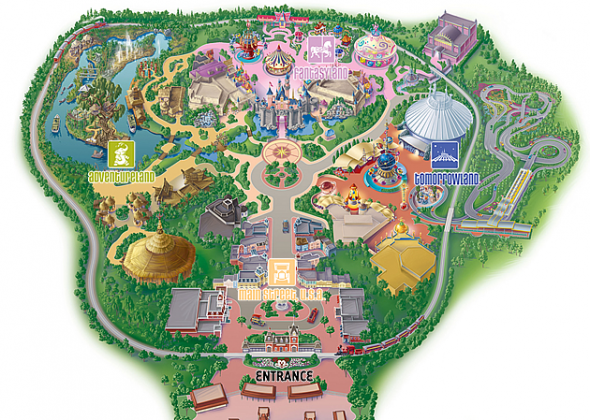
With little to do (and practically nothing exclusive or one-of-a-kind to entice international visitors), Hong Kong Disneyland needed a boost. And given that the resort is majority owned by the Hong Kong Government (who holds a 53% stake) who faced yearly losses by way of the new park, an expansion was assured.
In 2007, Disney announced an unprecedented and ambitious plan for the faltering California Adventure, dedicating more than a billion dollars into a five-year plan that would systematically rebuild the park one land at a time.
Could a similar transformation take place in Hong Kong? In 2007, rumors began to circulate that the Chinese park would soon gain its own Haunted Mansion. And given the unusual precedent set by the prior four parks in which the ride has never been spotted in the same land twice, fans eagerly imagined that Hong Kong’s inevitable Haunted Mansion would rise on Main Street or – even more thrilling – Adventureland! Imagine the possibilities! Yet, Disney’s plans were even grander than that.
A New Precedent
On April 2, 2009 the South China Morning Post reported:
“The government and The Walt Disney Company appear to have agreed to include new “lands” and rides based on wilderness, arctic, and adventure themes as part of a planned expansion of Hong Kong Disneyland, informed sources have said.”
Wilderness, arctic, and adventure… Hmm… Designers’ plans would see an unprecedented outer ring built around the edge of the theme park, stuffing three mini-lands into a wandering pathway that would follow the park’s railroad. The write-up continued:
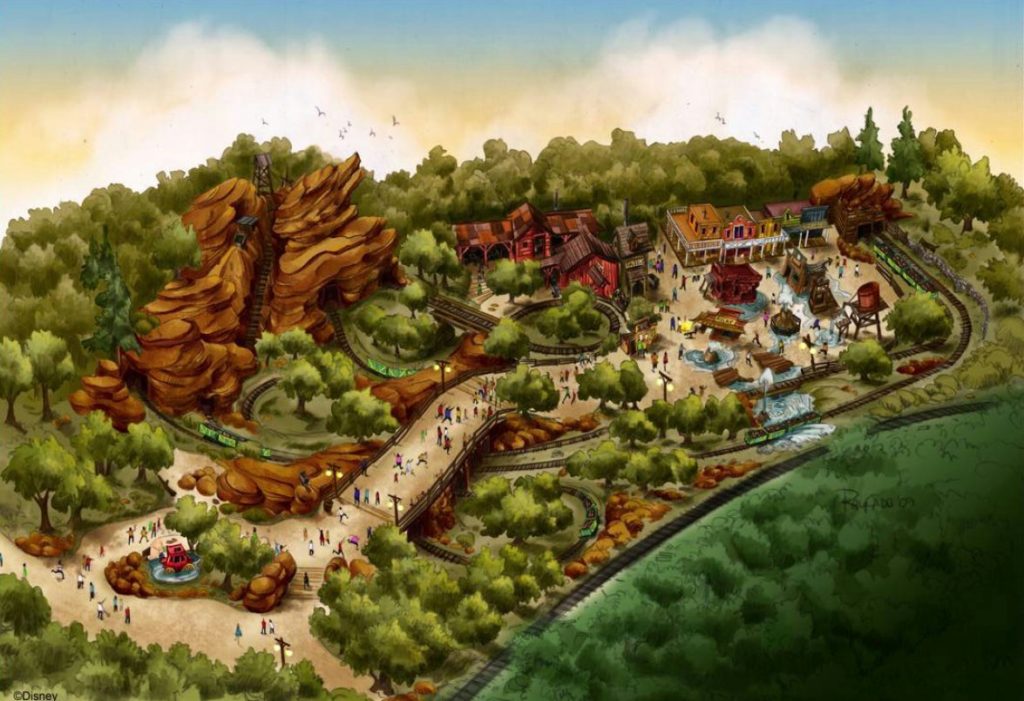
The expansion plan would see the largest area in the site become a nature wonderland. Passengers on a roller-coaster ride would pass through mine shafts, tunnels and a wilderness area complete with audio effects and animatronic (robotic) animals, the sources said…”
This land – Grizzly Gulch – would indeed be a wonder. A new, custom-built take on the Frontierland concept, Grizzly Gulch features as its signature ride the Big Grizzly Mountain Runaway Mine Cars. A sort of fusion between Big Thunder Mountain and Expedition Everest, the forward-backward coaster does indeed encounter mischievous bears that cause a few mishaps along the way.

“The arctic environment would allow visitors to enjoy real snow slopes in enclosed, temperature-controlled areas. A train ride was also planned.”
The land described here – Glacier Bay – was once envisioned as a frosted port for Tokyo DisneySea (which is how it made our list of 8 Spectacular Never-Built Lands). While details of the would-be land were never set in stone, it’s believed that it would’ve included a dark ride through the arctic and a half-pipe roller coaster style ride.
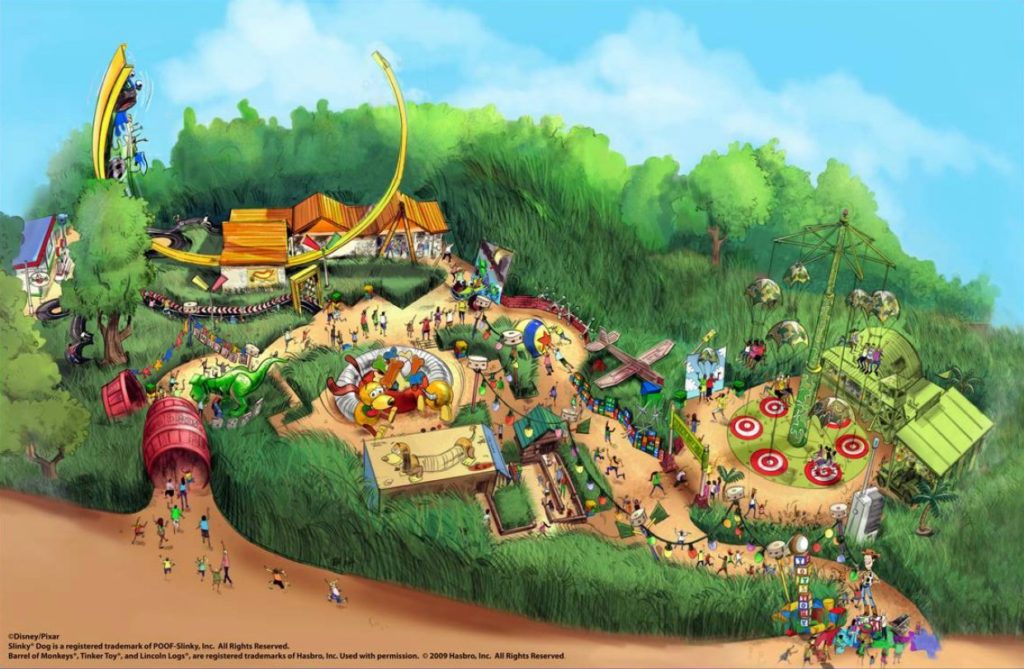
The Hong Kong government allegedly insisted that the arctic theme would be lost on their citizens and required that Disney change course, so this plot of land eventually developed into a copy of the Toy Story Land that had been dropped into the similarly small Walt Disney Studios in Paris.
So that’s wilderness… arctic… what about adventure? The South China Morning Post continued:
“A third land was based on the “unexpected” theme. Inspired by the adventures of early explorers, the area will see visitors transported on computer-controlled rides. The different environments would incorporate supernatural elements and animatronic figures, but the sequence of the rides would vary to let passengers enjoy a different experience each time, the sources said.”
Hmm… The “unexpected” theme? While in retrospect the connection is clear, when this announcement was made, Disney fans the world over had no idea at all what to expect from the promise of the unexpected. Was it an intentionally opaque hint? A bad translation?

Early speculation was that this land based on “adventures” and “supernatural elements” might be the long-awaited Isla Tortuga land based on the Pirates of the Caribbean franchise once earmarked for the Pirates-free park. But the truth was much more wondrous….
In July 2009, the Legislative Council of Hong Kong officiall approved the three-land expansion. After continuous construction that saw all three brand new lands being built simultaneously, Toy Story Land and Grizzly Gulch opened in 2011 and 2012, respectively.
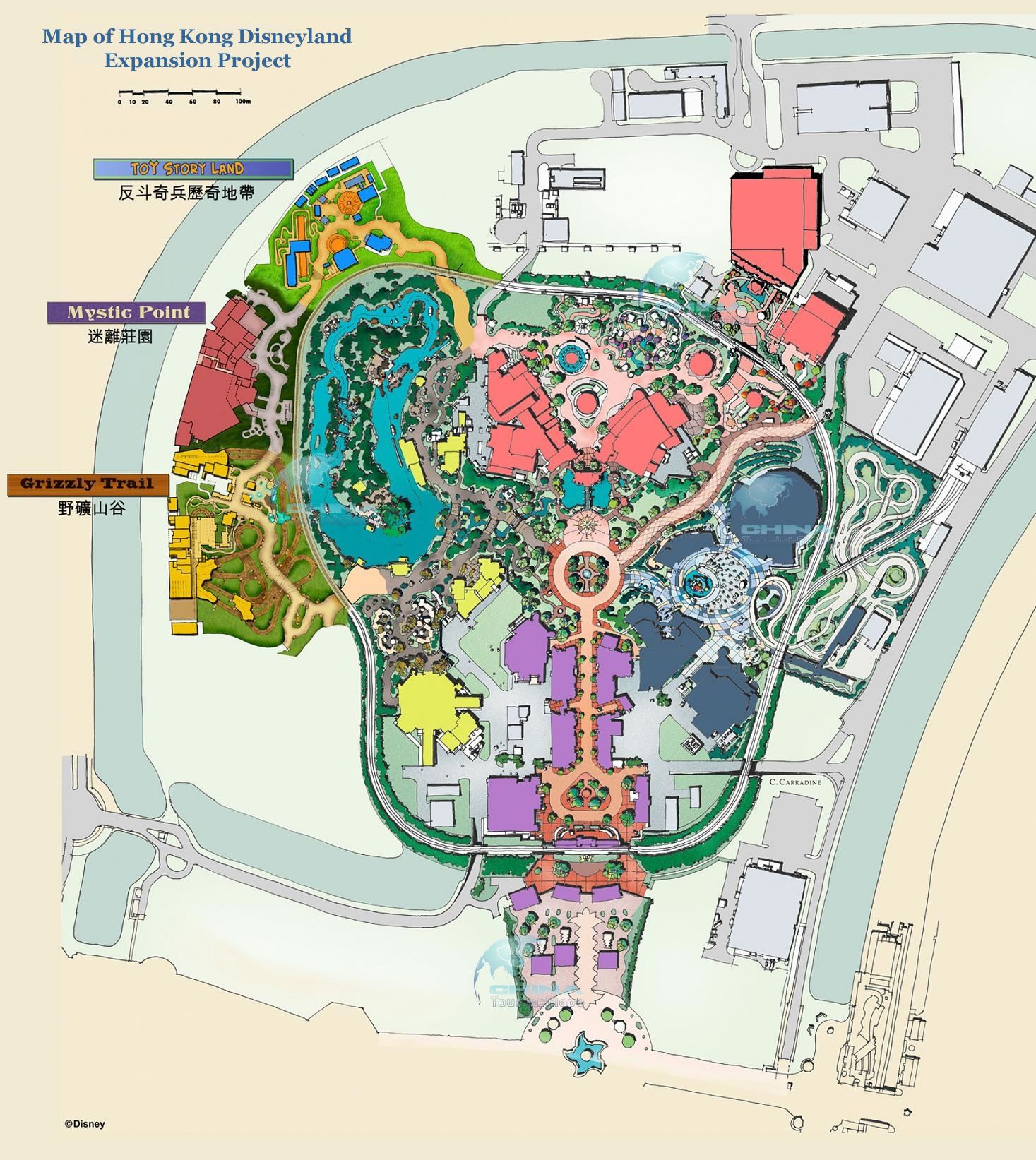
The third and final land would complete and connect an unprecedented outer “ring” of lands contained outside of the park’s Railroad. And it wouldn’t be pirate-themed at all…


